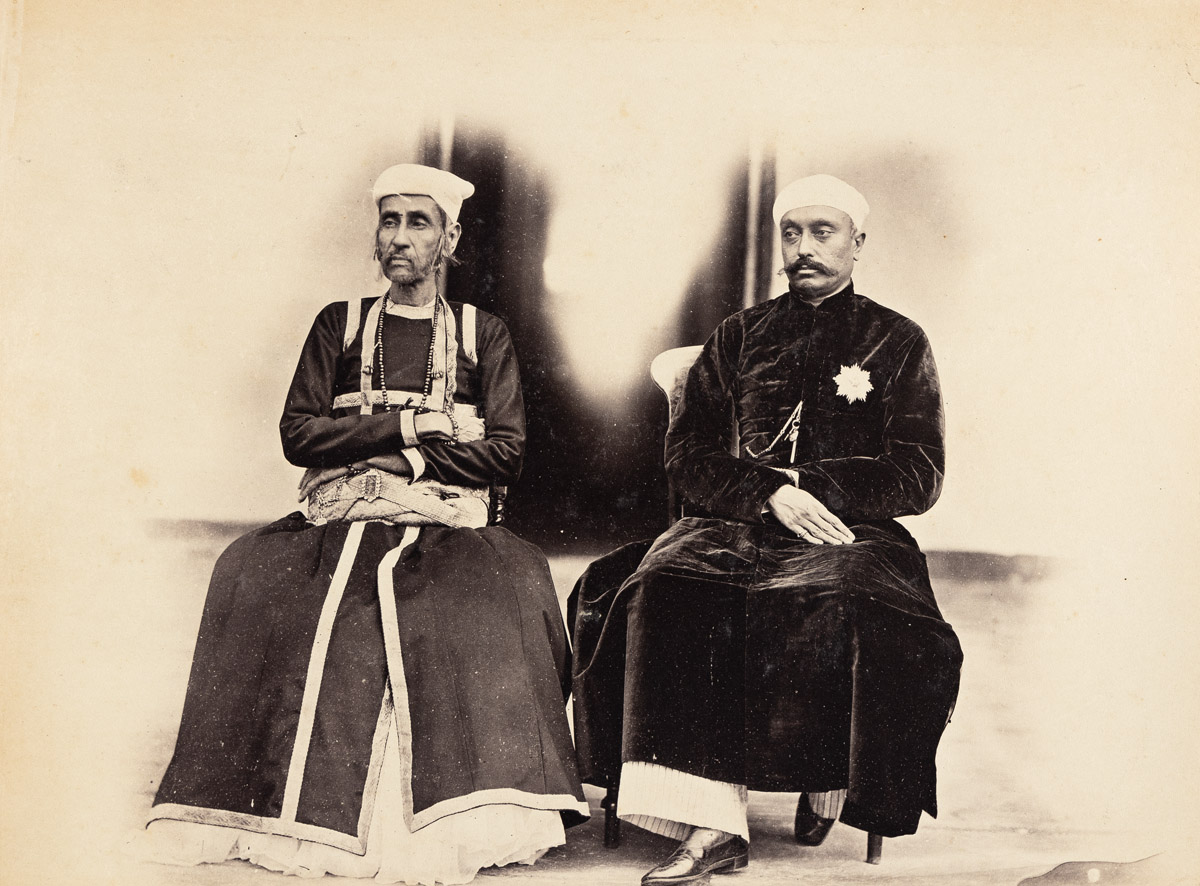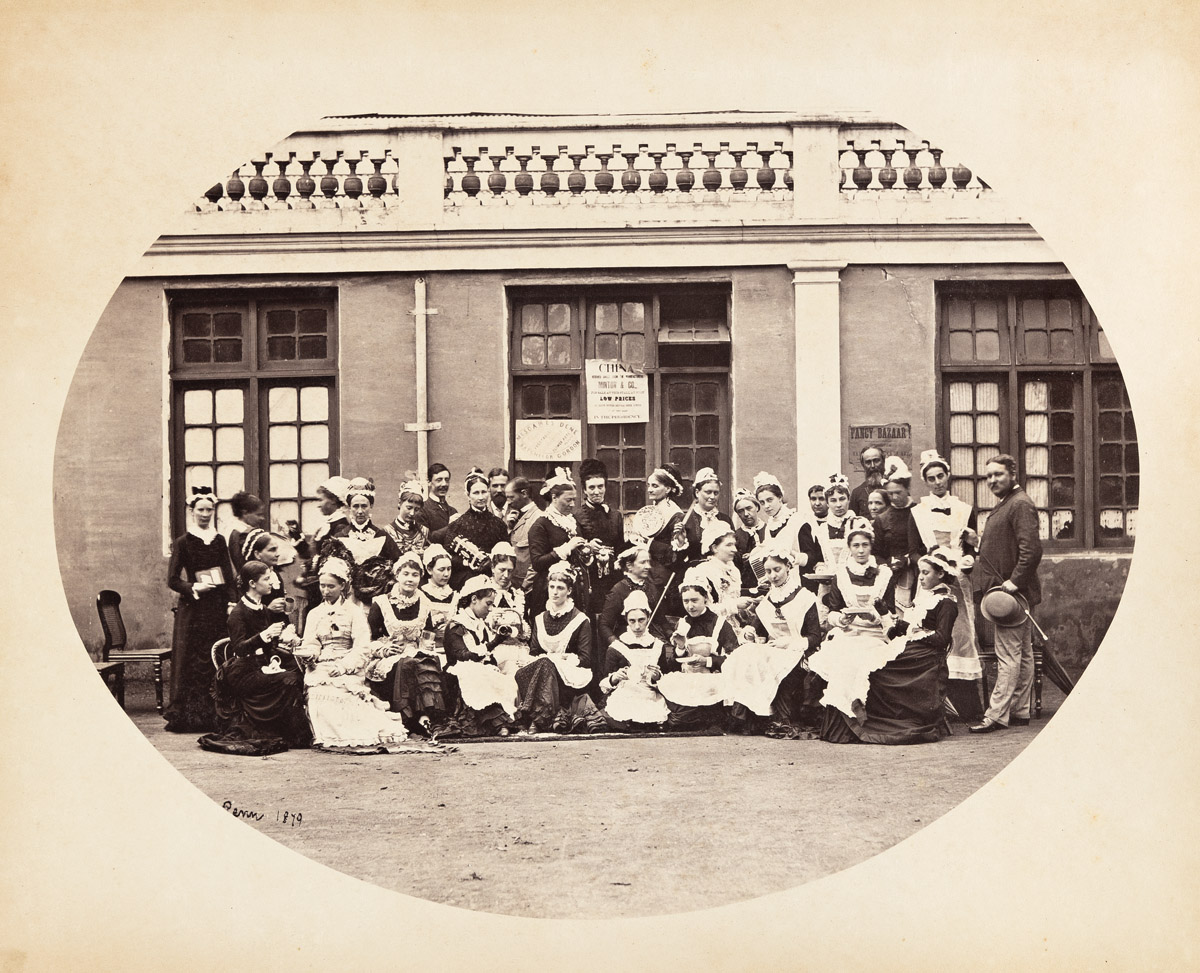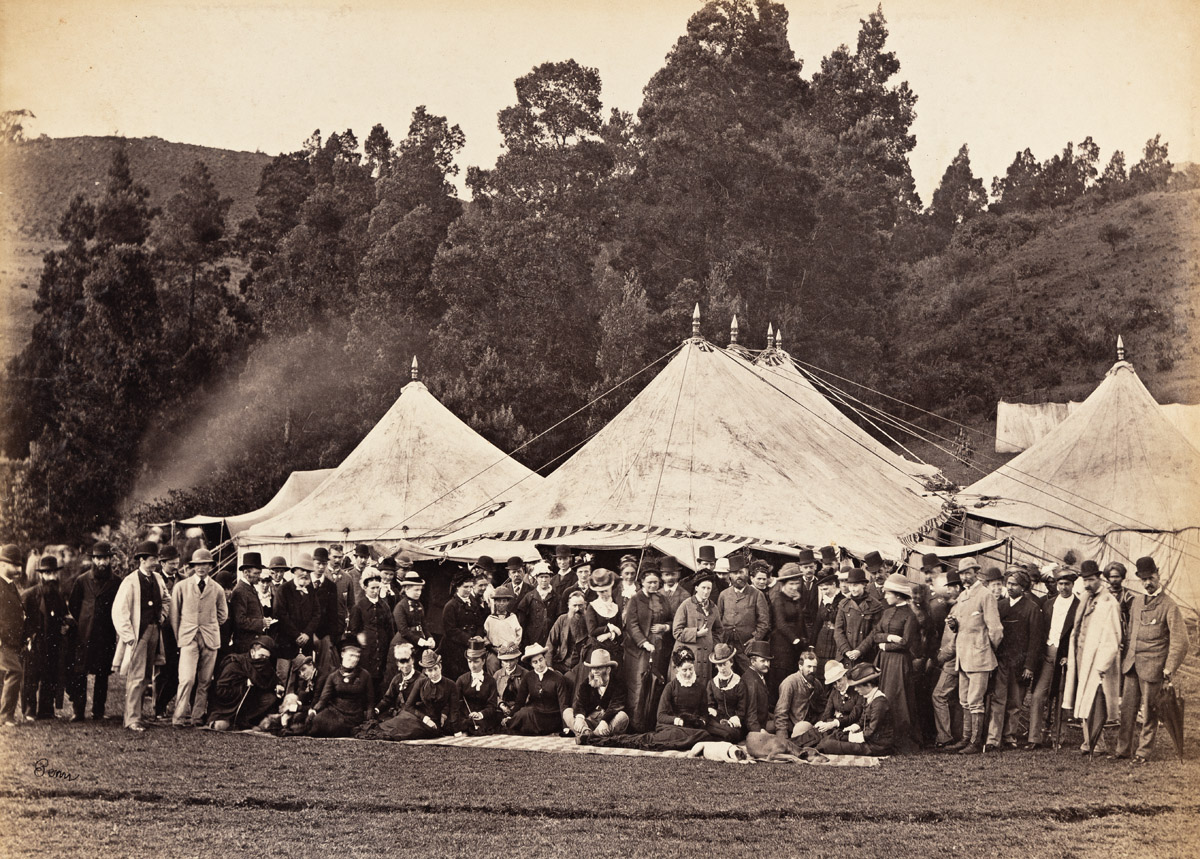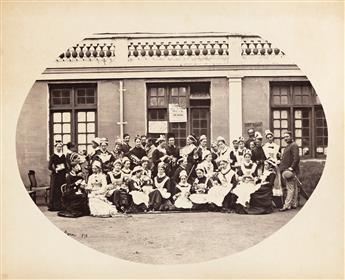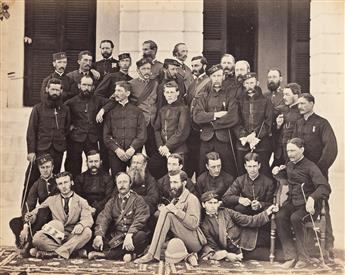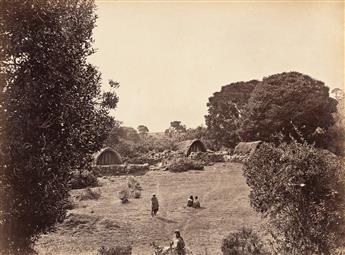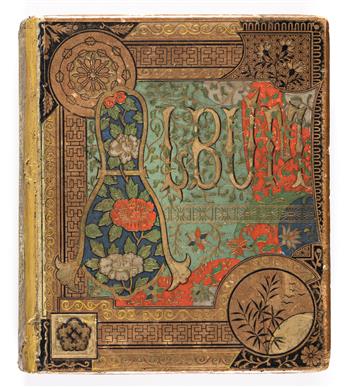Sale 2601 - Lot 3
Price Realized: $ 7,500
Price Realized: $ 9,375
?Final Price Realized includes Buyer’s Premium added to Hammer Price
Estimate: $ 5,000 - $ 7,500
(SOUTH INDIA)
An album with more than 40 photographs, some by A.T.W. Penn (1849-1924), of the Tamil Nadu hill station of Ootacamund (Ooty).
Featuring the overlooked photographs of A.T.W. Penn, who here takes his place in the pantheon of great 19th-century Indian photographers. The album includes wonderfully composed views of the town (present day Udhagamandalam), including a four-panel panorama, the Nilgiri Hills, picnics, tents, church fetes, Anglo Indian groups, and a view of local Toda tribespeople in their huts. There is also a view of the Nizam of Hyderabad's palace from the river, a portrait of two Hyderabad princes, several group and individual portraits of unidentified Britons, including a gaggle of civil servants and their wives in 18th-century costumes, British women dressed as nurses for a station bazaar, Madras troops and officers in Secunderabad, the European prison, the race track, and the inevitable icons of the Taj Mahal and the Cawnpore (Kanpur) Well Memorial to the victims of the Uprising of 1857. Albumen prints, the panorama measuring 8x42 3/4 inches (20.3x108.5 cm.), most of the images measuring 9x11 inches (22.9x27.9 cm.), and slightly smaller, approximately 13 are 5 1/4x7 inches (13.3x17.8 cm.) and slightly smaller, 12 with Penn's credit in the negative and many with later captions below the images in pencil. Small folio, decorative binding with elegant gilt embossing. Late 1870s
An album with more than 40 photographs, some by A.T.W. Penn (1849-1924), of the Tamil Nadu hill station of Ootacamund (Ooty).
Featuring the overlooked photographs of A.T.W. Penn, who here takes his place in the pantheon of great 19th-century Indian photographers. The album includes wonderfully composed views of the town (present day Udhagamandalam), including a four-panel panorama, the Nilgiri Hills, picnics, tents, church fetes, Anglo Indian groups, and a view of local Toda tribespeople in their huts. There is also a view of the Nizam of Hyderabad's palace from the river, a portrait of two Hyderabad princes, several group and individual portraits of unidentified Britons, including a gaggle of civil servants and their wives in 18th-century costumes, British women dressed as nurses for a station bazaar, Madras troops and officers in Secunderabad, the European prison, the race track, and the inevitable icons of the Taj Mahal and the Cawnpore (Kanpur) Well Memorial to the victims of the Uprising of 1857. Albumen prints, the panorama measuring 8x42 3/4 inches (20.3x108.5 cm.), most of the images measuring 9x11 inches (22.9x27.9 cm.), and slightly smaller, approximately 13 are 5 1/4x7 inches (13.3x17.8 cm.) and slightly smaller, 12 with Penn's credit in the negative and many with later captions below the images in pencil. Small folio, decorative binding with elegant gilt embossing. Late 1870s
Additional Details
Acquired in 1968 from the New and Secondhand Bookshop on Kalbadevi Road in Mumbai
Albert Thomas Watson Penn's relative obscurity as a photographer compared to such Subcontinental contemporaries as Bourne, Shepherd, and Dayal, cannot be explained by the quality of his photographs. As his images in this album attest, he was every bit their technical and aesthetic equal. More likely it is due to the fact that he limited himself primarily to the Madras Presidency, especially the environs of his hill station base in Ootacamund, high in the Nilgiri Hills.
Born in Somerset in 1849, Penn left England at the age of twelve and within four years had made his way to the Nilgiri Hills. There he set about mastering the still nascent art of photography and learning to contend with the peculiar Subcontinental difficulties--extreme temperatures, dust, mold, disease, poor roads and the slow and perilous transportation of his cumbersome equipment--that defeated many of India's first photographers.
Within a few years he was advertising his own "Ootacamund Photo Establishment," and for nearly half a century came to be regarded as the region's premier portraitist and documentarian. His countrymen on their hot-season sojourns and the Indian princes who took up summer residences in Ootacamund and nearby Conoor especially prized Penn's landscapes, which are still regarded as some of the finest Indian vistas ever taken.
After retiring from the field, Penn returned to England for a few years, only to move back to his beloved Nilgiris, where, in October 1924, he died of apoplexy mounting the steps of All Souls Church in Conoor, where he was buried on Tiger Hill.
Albert Thomas Watson Penn's relative obscurity as a photographer compared to such Subcontinental contemporaries as Bourne, Shepherd, and Dayal, cannot be explained by the quality of his photographs. As his images in this album attest, he was every bit their technical and aesthetic equal. More likely it is due to the fact that he limited himself primarily to the Madras Presidency, especially the environs of his hill station base in Ootacamund, high in the Nilgiri Hills.
Born in Somerset in 1849, Penn left England at the age of twelve and within four years had made his way to the Nilgiri Hills. There he set about mastering the still nascent art of photography and learning to contend with the peculiar Subcontinental difficulties--extreme temperatures, dust, mold, disease, poor roads and the slow and perilous transportation of his cumbersome equipment--that defeated many of India's first photographers.
Within a few years he was advertising his own "Ootacamund Photo Establishment," and for nearly half a century came to be regarded as the region's premier portraitist and documentarian. His countrymen on their hot-season sojourns and the Indian princes who took up summer residences in Ootacamund and nearby Conoor especially prized Penn's landscapes, which are still regarded as some of the finest Indian vistas ever taken.
After retiring from the field, Penn returned to England for a few years, only to move back to his beloved Nilgiris, where, in October 1924, he died of apoplexy mounting the steps of All Souls Church in Conoor, where he was buried on Tiger Hill.
Exhibition Hours
Exhibition Hours
Aliquam vulputate ornare congue. Vestibulum maximus, libero in placerat faucibus, risus nisl molestie massa, ut maximus metus lectus vel lorem.



